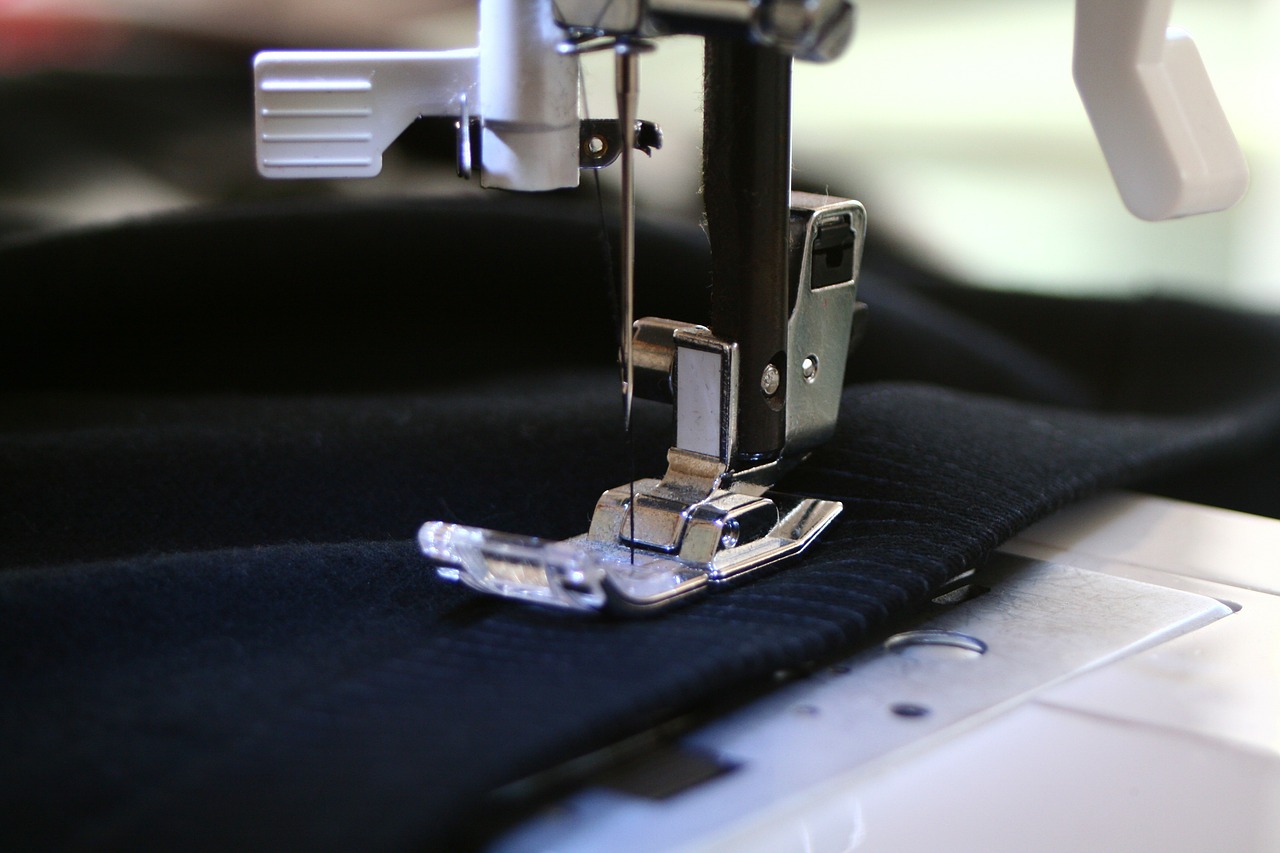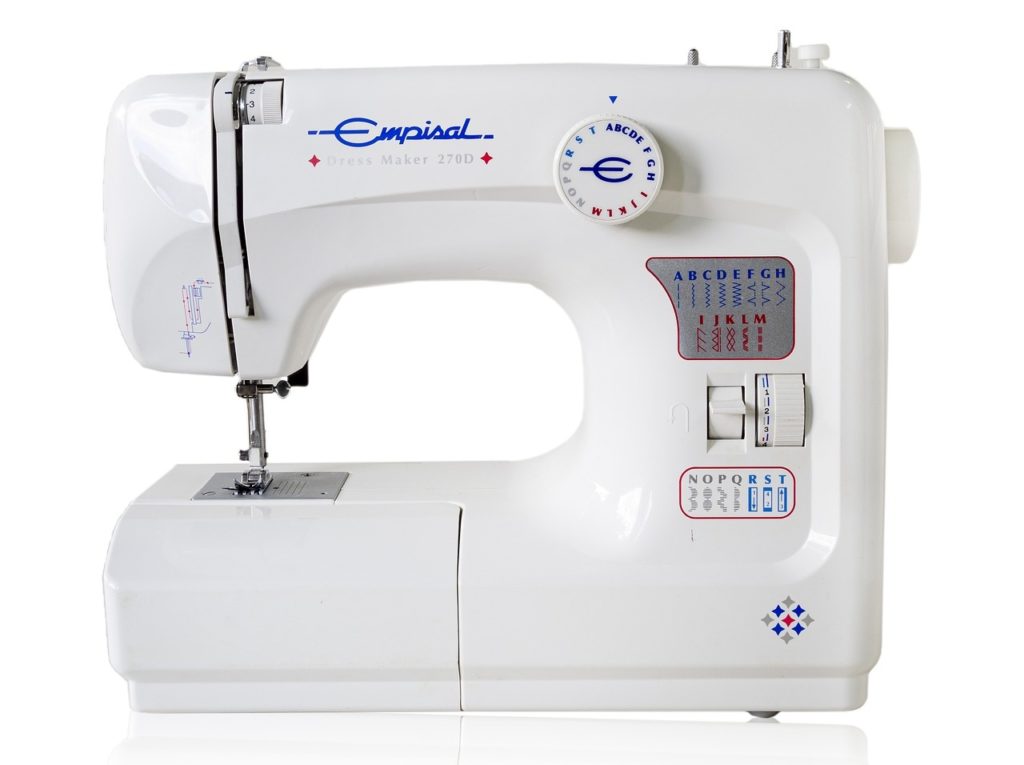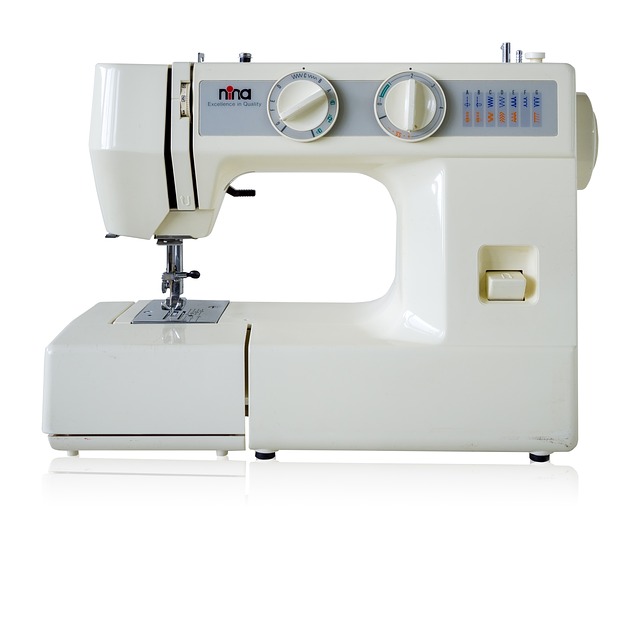The Ultimate Sewing Machine Type: Find Your Perfect Match
Buying a sewing machine is a long-term investment. You should always do some research and take various precautions before you order a sewing machine.
With so many sewing machine companies claiming to be making the best sewing machines in the world, there are great chances of being confused and ending up making the wrong decision.
The wrong decision can cost you a hefty amount of money because the cost of a high-end sewing machine can go well above a thousand bucks.
It can be more if you buy an industrial heavy-duty sewing machine.
You need to collect as much information as you can so that you know which sewing machine can better cater to your needs.
Although as you have arrived at this page, no matter how- whether someone referred you to this article or you landed from a Google search, I’ve covered everything in this post so that you don’t have to waste your time doing any further research.

Buying Guide for Sewing Machines
It is a complete sewing machine buying guide including a link (within this website) to the best sewing machines based on different needs.
For example, someone needs a sewing machine just for doing regular sewing chores, however, others may need to do the quilting and embroidery work as well.
One person may need a mechanical sewing machine, others may prefer a computerized one and some others may like the electric sewing machine.
It is been several years since I’m sharing my expert pieces of advice with the readers of this blog of mine.
I’ve reviewed several sewing machine models over the years on this website that have helped thousands of people and this guide too, is going to be really helpful for those who are planning to buy a sewing machine.
Let’s get started!
Get to know your Sewing Skill Level- Complete Newbie, Beginner, Intermediate, or an Expert
Before you go ahead with anything, the very first question you should ask yourself how good (or completely new) are you with sewing machines.
If you are a complete newbie, you to know about a lot of things before purchasing a sewing machine for yourself (everything is covered in this article).
However, if you are a beginner and are familiar with sewing machines or an expert, it is implied that you have some knowledge about sewing machines.
The expert sewists may directly jump to the section where I’ve created the list of the best sewing machines for experts.
There are a lot of sewing machine models specially for beginners that are easy to use such as an easy threading system, compact, and of course less costly than high-end sewing machines.
Although the intermediates and experts can find sewing machines with advanced features such as computer connectivity, fast stitching speed, and LCD touchscreen to control various features. Such type of sewing machine is expensive.
You should choose the sewing machine model based on your level of sewing skill.
Although some advanced sewing machines such as SINGER 9960 are pretty easy to set up and operate as well.
Even newbies can use this sewing machine with ease.
Know the Types of Sewing Machine Available in the Market
The sewing machine was invented in 1790 and since then it has evolved so much that the latest sewing machine can do a lot of things automatically such as automatic needle threader, auto bobbin winding, automatic thread cutter, etc.
The old-age sewing machine was a mechanical sewing machine and they are still in use.
It depends on the users whether they want a mechanical sewing machine or other types.
There are mainly 4 types of sewing machines in today’s time.
Mechanical Sewing Machine
Mechanical sewing machines which are also called domestic/manual sewing machines are the oldest type of sewing machine and they are a bit bulky, have manual controls, and lack automatic features such as automatic needle threaders, automatic thread cutters, or automatic thread tension controllers.
The length of the stitch is adjusted by a knob or a rotatory dial given on the front of the sewing machines
They are basic sewing machines and require physical work from the users. They do not have an electric power button that turns the machine on or off!
Mechanical sewing machines are inexpensive sewing machines as compared to electric or computerized sewing machines.
Mechanical sewing machines are the most durable sewing machine as they have a solid metallic body that is meant to last longer.
They are also quite heavy in weight.
This type of sewing machine doesn’t have many features as you can find in computerized sewing machines as such e.g. they do not have many built-in stitches, they are mostly straight stitching sewing machines.
When it comes to the after-sales services, the mechanical sewing machines don’t get malfunctioned easily and the repair cost is relatively very low.
Also, you can take such types of sewing machines to any local repair shop.
Computerized Sewing Machine
Computerized sewing machines are completely the opposite of mechanical sewing machines.
They are the most advanced sewing machines with a lot of new innovative features that ease your crafting experience and make it more entertaining.
The computerized sewing machines are compact, lightweight, and come with automatic features such as an automatic needle threader, thread tension controller, and automatic thread cutter.
They have an LCD touchscreen that displays relevant information such as which stitch pattern you have selected, the length & width of the stitch, stitching speed, etc.
Some of the computerized sewing machines come with a push-button while some high-end computerized sewing machines can be controlled by tapping on the touchscreen.
Computerized sewing machines are expensive as they have a lot of features and they aren’t easily repairable.
You also have to spend a substantial amount of money if it gets malfunctioned and is not covered under warranty.
They are futuristic sewing machines and instead of big rotatory dials like mechanical sewing machines, they have small push buttons to manage stitching speed, length & width of the stitch, etc.
Computerized sewing machines also come with a computer connectivity feature which is the most important thing about these types of sewing machines.
Such types of sewing machines come with a large number of built-in stitches to decorate your item with different stitch patterns, and embroidery designs.
They can be connected to the computer through a USB cable (Machines have a USB Port) as well so that you could transfer embroidery designs to the machine’s memory that you have downloaded from the internet.
Some of the high-end computerized sewing machines have the feature to edit and preview the embroidery design on the LCD touchscreen before stitching!
Electronic Sewing Machine
Electronic sewing machines are a combination of mechanical and computerized sewing machines.
They have the characteristics of both types of sewing machines.
They generally have one motor that is connected to the needle bar.
These types of sewing machines have rotatory dials or a knob to control the stitch length.
They have manual controls to adjust the thread tension.
Although electronic sewing machines come with features like an automatic needle threader, automatic thread cutter, etc.
They come with a foot pedal that can be used to control the stitching speed once the power wire is plugged in and the power button is turned on.
Some electronic sewing machines have an LCD screen that displays current settings.
Electric sewing machines are not heavy in weight and they are inexpensive compared to computerized sewing machines.
You’ll have to spend more than what you pay for a mechanical sewing machine.
Such types of sewing machines again are not easily repairable and need a certain level of skill to repair them.
Seger Sewing Machine
The serger sewing machines are also called overlock sewing machines.
So don’t get confused if you go to purchase a serger sewing machine and the seller calls it an overlocker sewing machine.
They are named differently in different countries.
They are called Serger in North America so I’ve used this to explain this type of sewing machine.
They are generally used in textile industries to create edging hemming and seaming.
The serger sewing machines are not commonly used at home because of their limited use for home sewists.
They are used to give a finishing look to your crafting project.
The serger sewing machines are used to avoid fraying as the blade/cutter on the serger sewing machine cuts the fabric to clean it and create stitches, encasing the fabric.
The serger sewing machines are expensive and need to be taken to a skilled worker in case they start creating the problem.
Depending upon the serger sewing machine model, they use 2,3,4 threads for edging hemming, and seaming.



